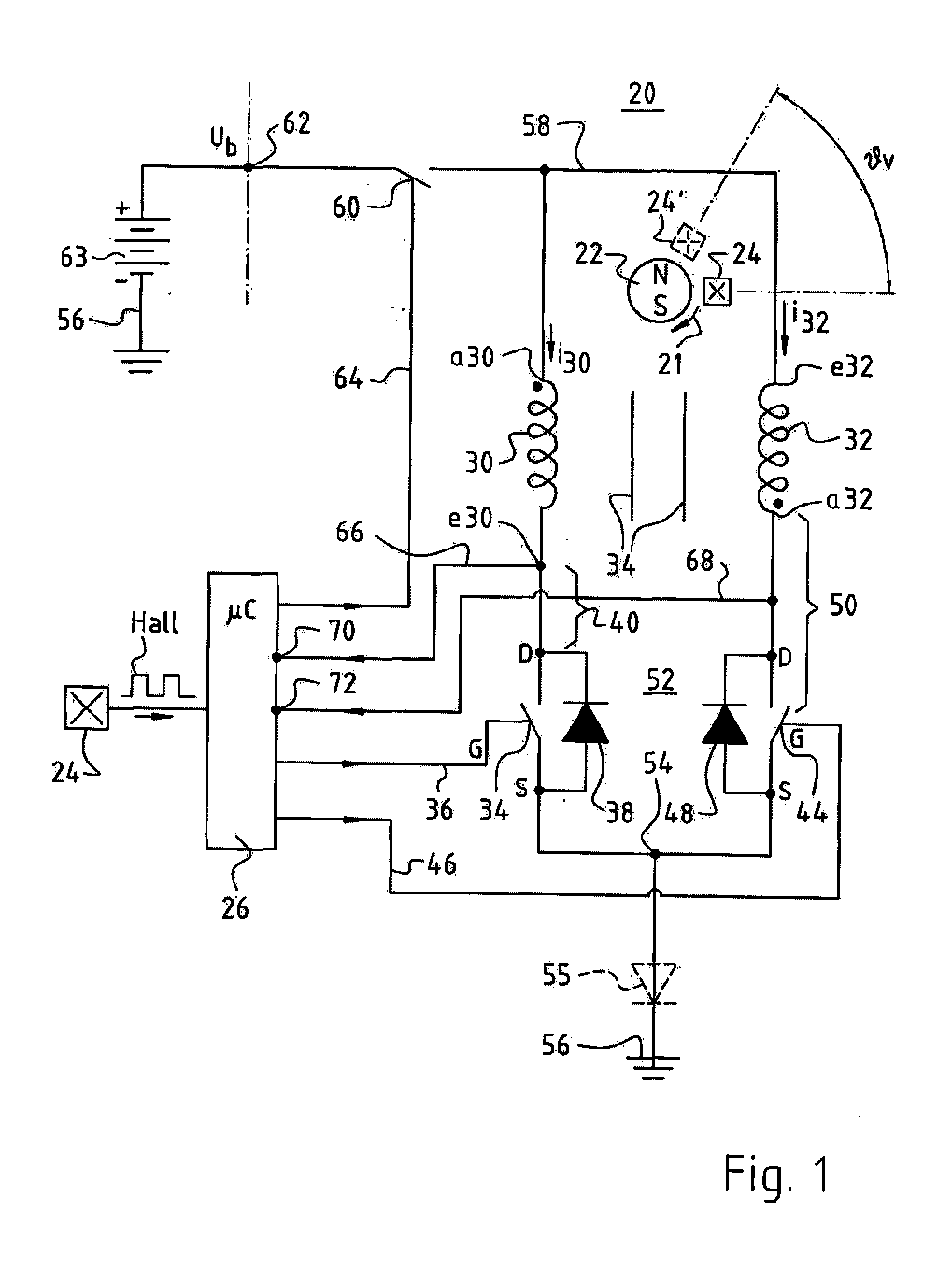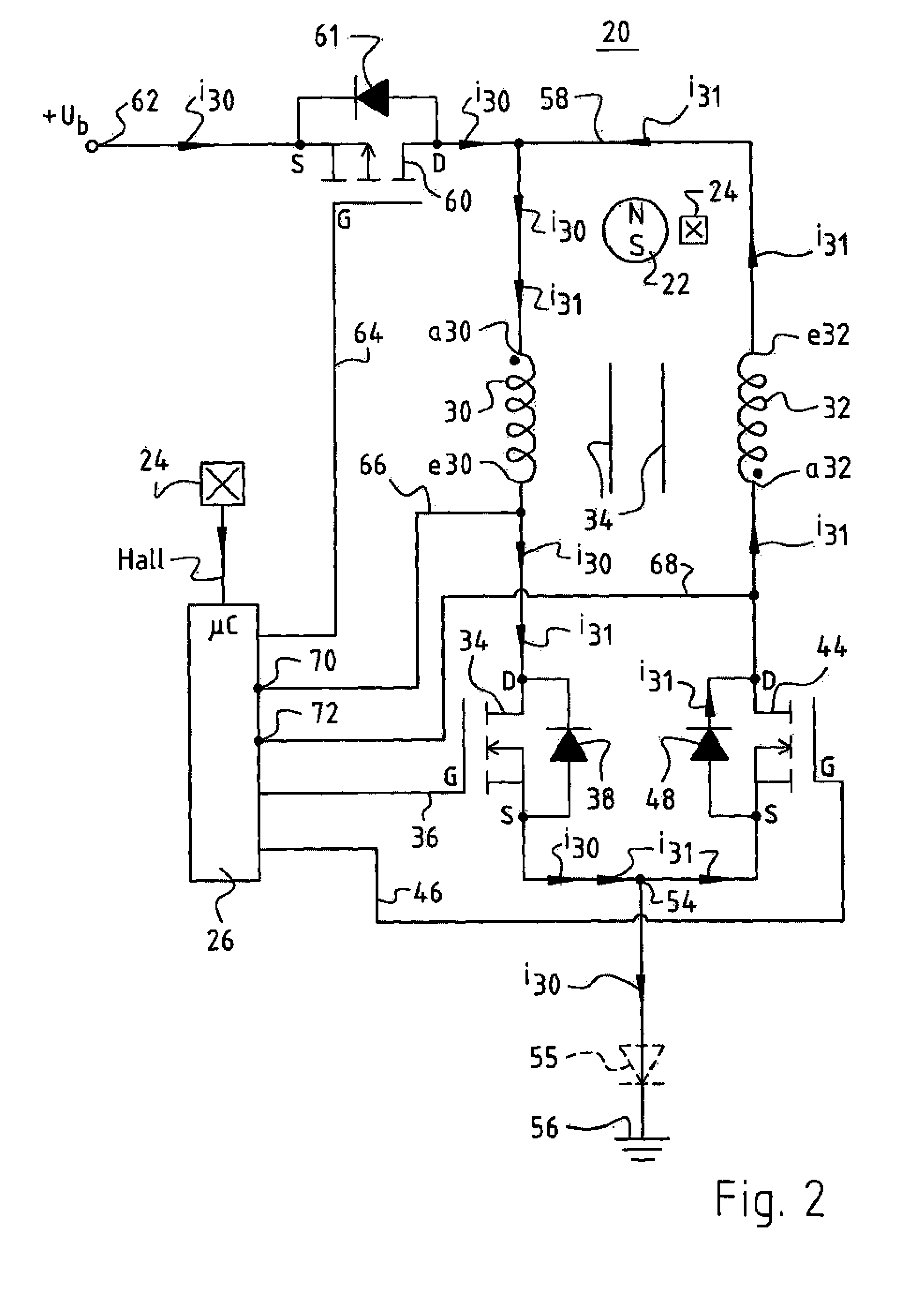Method for Operating an Electronically Commutated Motor, and Motor for Carrying Out a Method Such as This
- Summary
- Abstract
- Description
- Claims
- Application Information
AI Technical Summary
Benefits of technology
Problems solved by technology
Method used
Image
Examples
Embodiment Construction
[0036]FIG. 1 is a schematic depiction of a motor 20 according to a preferred embodiment of the invention. It has a permanent-magnet rotor 22 (indicated only schematically), whose rotation direction is designated 21 in order to depict graphically the offset of a Hall sensor 24 oppositely to the rotation direction. Rotor 22 is depicted as having two poles, but it can also have four, six, etc. poles; and it can be, for example, an internal rotor, an external rotor, or the rotor of a motor having a flat or conical air gap.
[0037]This rotor 22 controls Hall sensor 24, which is also depicted to the left in FIG. 1 and generates, in operation, a “Hall” signal that is depicted schematically in FIG. 1 and is supplied to a microcontroller μC 26 that is associated with motor 20 and is usually built into it. The provision of current to μC 26 at a regulated voltage of, for example, 5 V is not depicted, since it is known to one skilled in the art. μCs of this kind are used in very large numbers in ...
PUM
 Login to View More
Login to View More Abstract
Description
Claims
Application Information
 Login to View More
Login to View More - R&D
- Intellectual Property
- Life Sciences
- Materials
- Tech Scout
- Unparalleled Data Quality
- Higher Quality Content
- 60% Fewer Hallucinations
Browse by: Latest US Patents, China's latest patents, Technical Efficacy Thesaurus, Application Domain, Technology Topic, Popular Technical Reports.
© 2025 PatSnap. All rights reserved.Legal|Privacy policy|Modern Slavery Act Transparency Statement|Sitemap|About US| Contact US: help@patsnap.com



